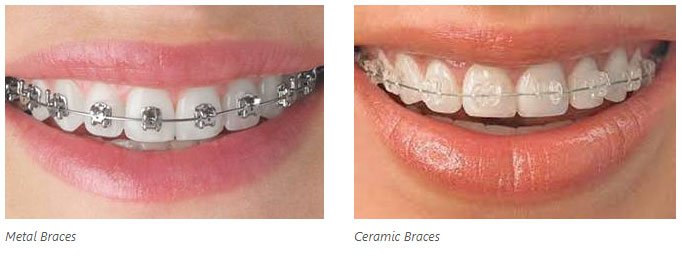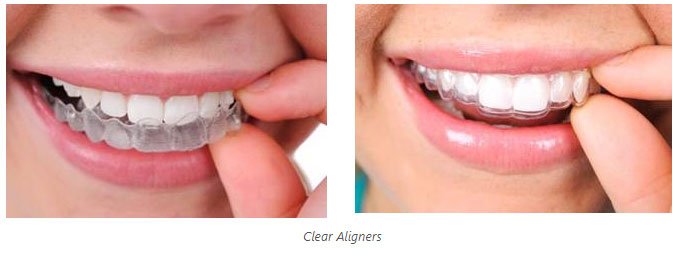Are you currently weighing your options for the type of orthodontic treatment that you should opt for?
Do you want to improve your smile but flinch at the thought of getting metallic braces?
Well, the first thing to consider would be to book a consultation at Indiadens to get an expert opinion. It is one of the leading centres for advanced dental procedures in Delhi. You will be provided with first-hand information on your smile, the kind of treatment that you require, and the treatment options available for you. Meanwhile, if you need more time to take the decision, feel free to read a bit about the comparison of braces and aligners in the following text.
First, here’s a quick overview of braces and aligners:
Traditional Braces – A treatment system comprising brackets and archwires. Brackets are fixed on the teeth in which wires are engaged. They cause an extremely smooth and slow movement of the malaligned teeth into proper position. The different materials of braces available are stainless steel, ceramic (tooth-coloured), a combination of materials.

Clear Aligners – It is one of the treatment modalities which has revolutionized the field of orthodontics. Clear aligners are used as a customised series of clear plastic aligners alternative to braces for adults. They are gaining popularity as they are virtually invisible and are removable. Many companies manufacture custom-made aligners; for example K-Line (Germany), Invisalign (USA), etc.

We can now discuss the differences by broadly classifying the factors under the following:
Esthetics:
Traditional metal braces are noticeable and are not esthetic, but can vary in the extent to which they are noticeable. Braces use small elastics to keep the archwire secure and for many younger patients, this is a great way to use fun colours or patterns to turn their orthodontic care into an accessory. Likewise, the look of braces can be downplayed by using tooth-coloured elastics or by using clear or tooth-coloured plastic or ceramic brackets. Unfortunately, the wire will still be noticeable.
Clear aligners are the most incognito way to go through orthodontic treatment. Since most patients receive a new set of aligners every 10-14 days, it’s easy to maintain transparency and cleanliness. Some aligners require attachments to facilitate larger movements and these are typically in the form of tooth-coloured bumps that snap into your aligners. Another factor to consider – aligners can temporarily accentuate a lisp or other speech impediments while you get used to them, but this typically goes away very quickly.
Comfort:
Traditional braces have a variety of metal brackets and wires that can poke into your lips, cheeks or tongue, attributing to ulcers/sores. Your orthodontist may recommend orthodontic wax as a great resource to mitigate sore spots due to your braces until you can get an appointment for an adjustment. Typically after an appointment, patients with braces can have some soreness and discomfort for a few days before it goes away until the next appointment.
With clear aligners, it’s easier to distribute movements to limit discomfort, as the course of treatment is planned from the beginning. Since aligners are smooth (barring those that have attachments), the only concern when it comes to comfort is when the edges of the aligners rub against the gums. This can be easily adjusted in your appointment with the orthodontist, and you can be comfortable again.
Convenience/Timing:
Braces usually have a long appointment in the beginning that comprises of bonding the brackets and attaching the wires through them. The second long appointment involving debonding of the brackets would be in the end. But there are several short visits every month or so, needed to adjust the wire and check the progress of your smile correction. Apart from these, you may need to visit your orthodontist in case you break a bracket/wire.
Likewise, the initial and final appointments for clear aligners are long and the orthodontist plans the course of your treatment with the assistance of artificial intelligence. A set of aligners are delivered to the patient every 10-14 days and there would be fewer in-between appointments for check-ups. In case you lose your aligner or ruin it in some way, you would need to consult your orthodontist to either get the set replaced or start with the next set of aligners.
Compliance:
Traditional braces are considered a suitable option for young children (8-14 years). The only major responsibility of the patient is to maintain thorough oral hygiene and not eat food that is bad for braces. Apart from that, the desired movement of teeth is the responsibility of the orthodontist.
Clear aligners are generally opted by older teens and adults for their esthetic quality and because of their compliance requirements. They are supposed to be worn for 18-22 hours a day and also need to be removed before eating and brushing. They should be rinsed, cleaned and put back into the mouth right after. If you do not comply with the instructions for wearing aligners for the required duration, your orthodontist may decide to discontinue the treatment and switch to braces.
Concern:
Depending on your concerns, invisible aligners may not be an adequate choice because they can’t fix every problem. They are apt for mild to moderate alignment issues. Therefore, consult your orthodontist for the kind of orthodontic treatment you would require. Clear aligners are great for crooked teeth, overbite, gaps, crowding, open bite, etc.
Traditional braces are good for all of the above and for more complex cases. For example, if you have teeth that need to be raised to match the height of the other teeth or if you have rotated teeth, braces are ideal. Similarly, if you need to fix the midline of your teeth or large gaps, your orthodontist would suggest braces. Additionally, some dental work, such as dental bridges, prevent you from using Invisalign.
Cost
Orthodontic treatments are not usually cheap, but traditional braces are usually cheaper and/or more cost-effective than aligners. The treatment cost depends upon the severity of the problem and hence the time required for correction.
If you still have more questions, feel free to refer to our frequently asked questions section about braces and aligners treatment in Delhi.












